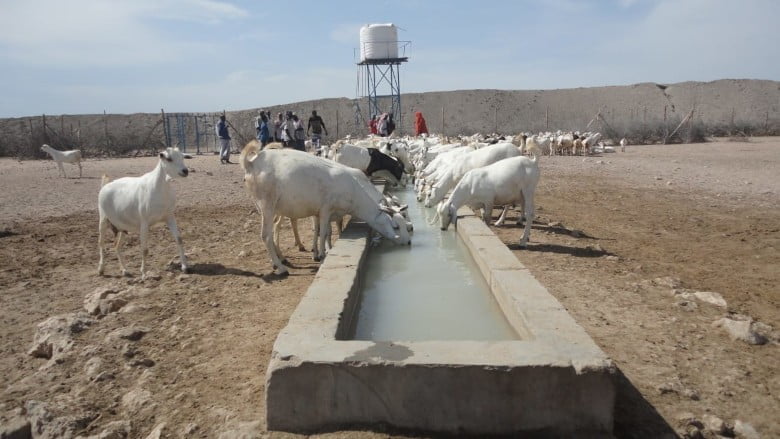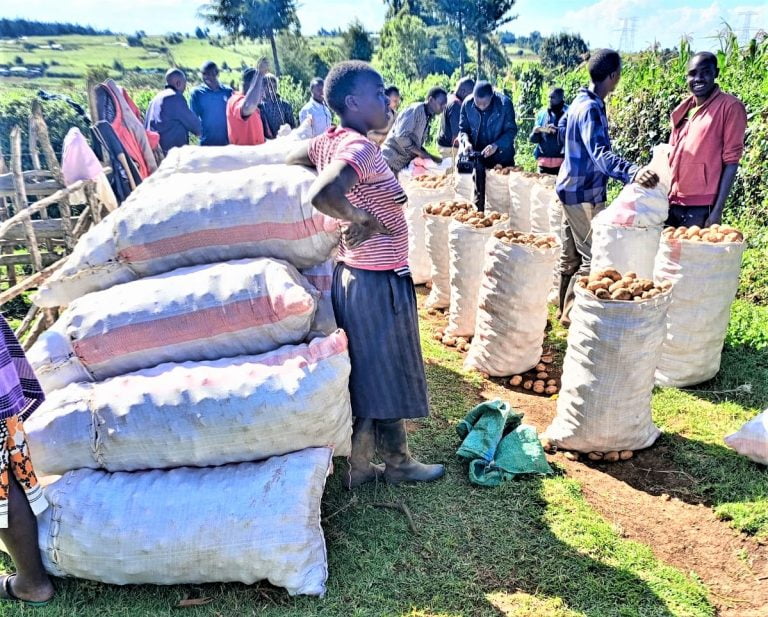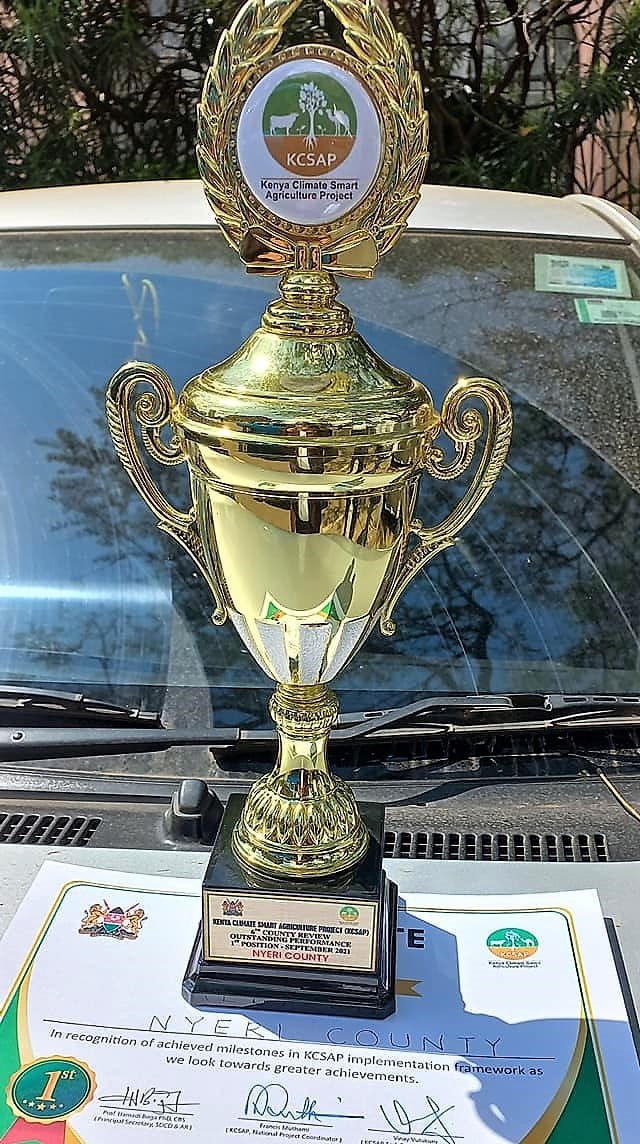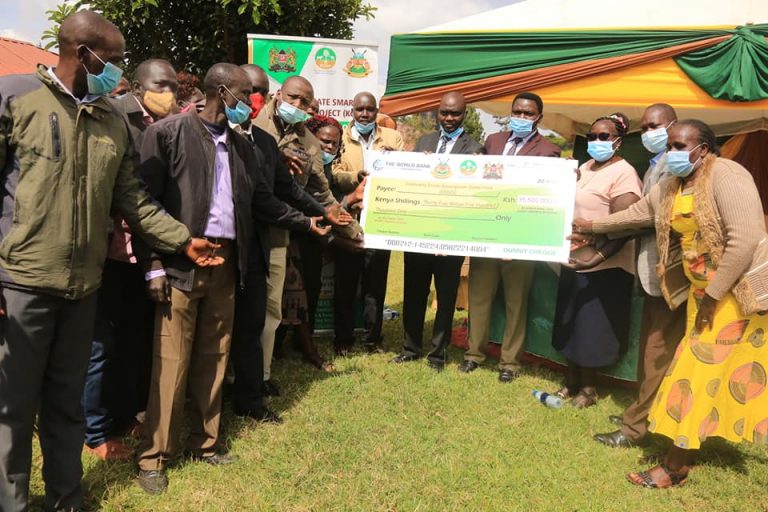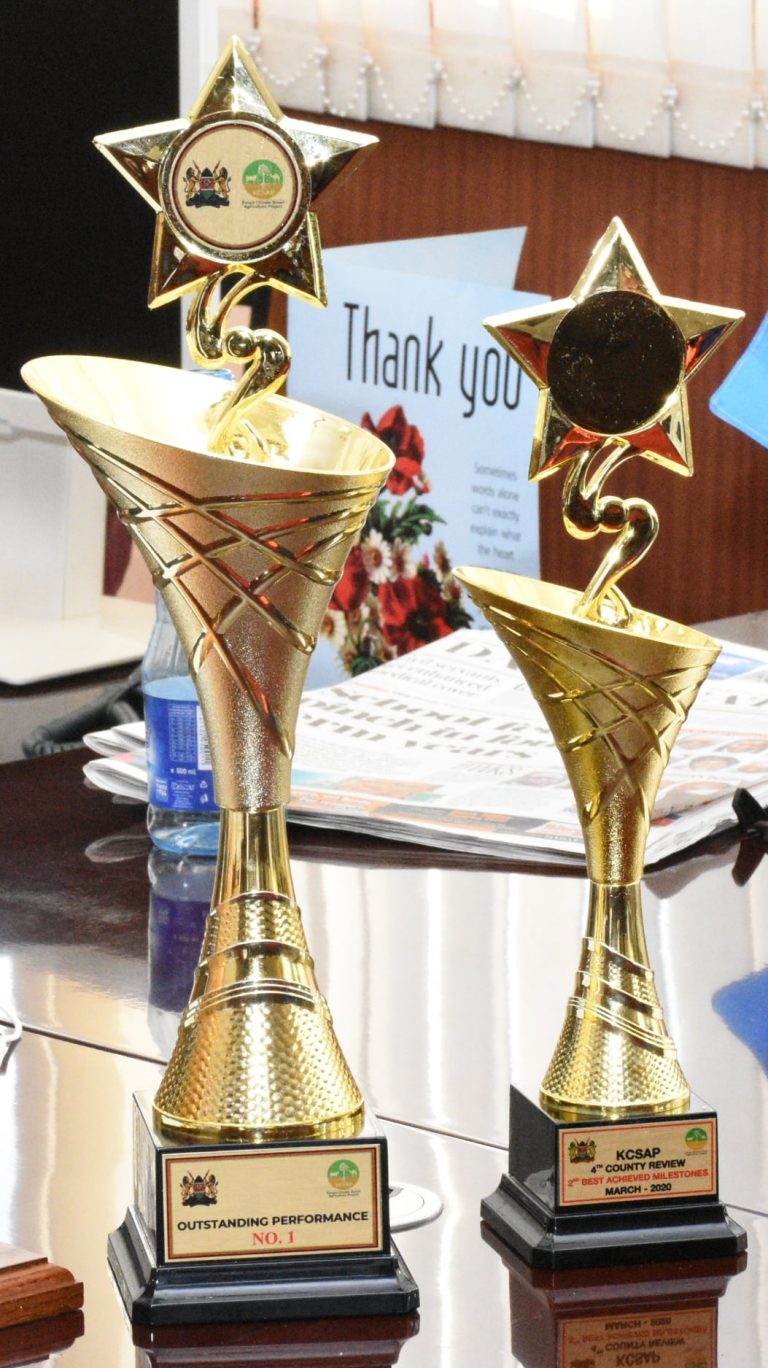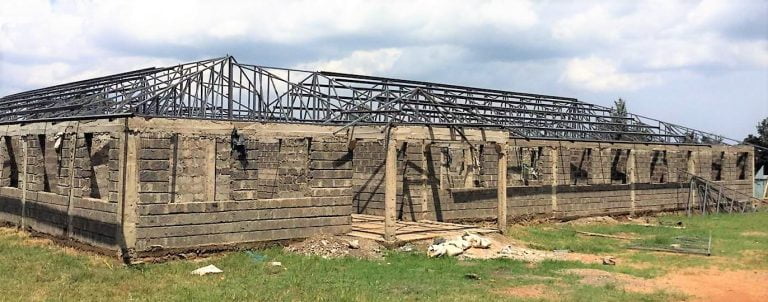Biliq Villagers sang, danced and jumped joyfully as they celebrated and praised creator for granting them their biggest wish: water. The thrill of a whole village revolved around the Tawakal Water Pan; whose construction ushered in an oasis of hope.
The water pan, an investment under the Kenya Climate Smart Agriculture Project (KCSAP), stores rainwater, improving pastoral livelihoods.
Before the pans were installed, water came at a relatively high cost for this community. For decades, women and girls in Wajir—a sweltering, water-scarce county—have trekked daily for long distances and insecure routes in search of water. On a good day, they would get the precious commodity from water boozers, vehicles with tanks that supply water to remote areas.
“When the water boozers failed to show up, we were forced to walk over 30 kilometers in scorching heat to the water points with our entire livestock,” said Fatuma Mohamed, a livestock farmer in Biliq village. “We would take a whole day.”
Wajir County is one of 10 counties benefitting from the $1 billion World Bank-funded North and North Eastern Development Initiative (NEDI), which aims to reduce development gaps in the region. KCSAP is a core NEDI program focused on increasing agricultural productivity and building resilience to climate change for Kenya’s smallholder farmers and pastoral communities.
“The Kenya Climate Smart Agriculture Project provides a great opportunity for the communities and county governments to make specific investments like these that will have a sustainable impact on the livelihoods of farmers and pastoralists,” said Vinay Kumar Vutukuru, World Bank Task Team Leader. “It’s heartening to see resilience shown by the communities during this concurrent crisis of the COVID-19 and the locust attack as they continue to leverage the KCSAP project to enhance their livelihoods.
The Tawakal Water Pan was constructed in 2019 with a water harvesting capacity of nearly 45000 m3 at a total cost of about $170,000 to ensure water availability for domestic and livestock use especially during the dry seasons.
The pan serves more than 1,000 direct beneficiaries, of which 50% are female, who now have water within close reach for themselves and an estimated 9,500 livestock.
In addition to allowing easier access to water for domestic and livestock use, some additional benefits of the water pan include:
- Available water at minimum cost
- girls are concentrating on full-time schooling and women have opened food kiosks near the water pan to sell food to the herders who bring animals to drink water
- Livestock productivity has been enhanced due to the reduced distance to the watering point – two kilometers from 30 kilometers
- Increased enrollment of children in the local primary school
- Harvesting of the surface water run-off has reduced flash floods
- The water pan contributes to building the resilience of the people of Biliq village to climatic shocks
To sustain the water pan, a community-led management committee charges a small fee for the livestock taking water from the Tawakal water pan. The fee helps with maintenance, such as desilting the inlet and other works. The Biliq community has been trained to undertake catchment protection activities to ensure longer term water harvesting and minimize siltation into the pan.
“This oasis of hope has restored the smile and dignity of a people traumatized by years of thirst and hunger,” said Mohamed Adan AbdulKarim, Chief of Ademasajida Ward. “Every evening, as the sun sneaks into its hideout, the residents retire to bed energized and hopeful for yet another day. A day free from thirst and hunger!”


